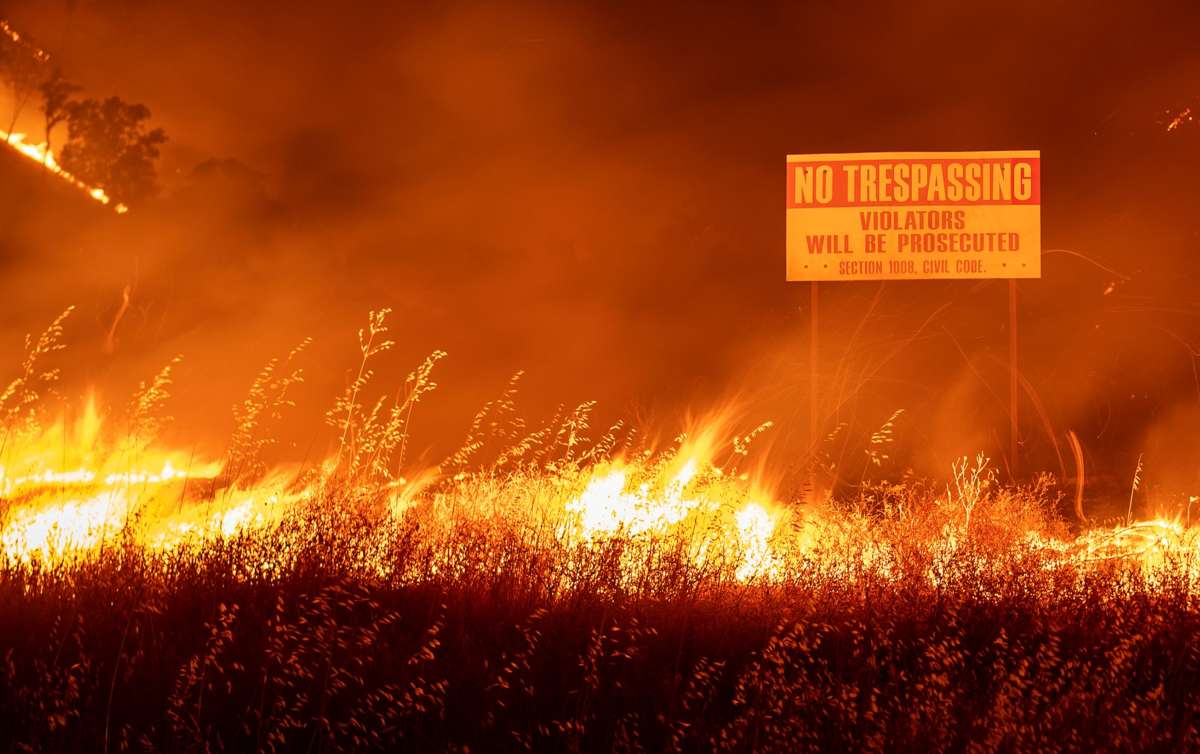As wildfires rage in California, advocates are pushing for Gov. Gavin Newsom to evacuate prisons in the line of the fires.
“It’s disaster on top of disaster on top of disaster,” Kirsten Roehler, whose 78-year-old father, Fred Roehler, is imprisoned in Lancaster, California, told The Guardian.
The 2020 wildfire season is especially difficult for multiple reasons, including record high temperatures and extreme weather and, of course, Covid-19.
Flames burned through more than 770,000 acres in the Golden State within just one week, the Washington Post reported Friday, leaving five people dead and air quality continually decreasing. Some of the state’s prisons are located in areas under evacuation orders, including the California Medical Facility (CMF) and Solano State Prison, which are outside of Vacaville, California.
“They are breathing in fire and smoke, and they have nowhere to run,” Sophia Murillo, 39, whose brother is incarcerated at CMF in Vacaville told The Guardian. “Everyone has evacuated but they were left there in prison. Are they going to wait until the last minute to get them out?”
Civil rights advocates have called on the governor to release incarcerated people since the COVID-19 outbreak began ravaging prison populations and staff throughout the United States. Newsom and other governors have released thousands of people from prison in light of the pandemic, but with the fires raging closer and closer to physical prison structures, the calls for more action are growing.
In Vacaville, instead of releasing people from prison, officials moved 80 people “to sleep in outdoor tents instead of indoor cells” in a move meant to mitigate the spread of Covid-19 in its facility, The Guardian reported. But the wildfires have damaged air quality, prompting authorities to move incarcerated people back inside.
“I’m furious at the incompetence and severe inhumanity of this,” Kate Chatfield, policy director with the Justice Collaborative, a group that fights mass incarceration, told The Guardian. “Covid is allowed to rage through the prison system and kill people, and then they have tent hospitals set up … and now with wildfires, they take down the tents and put these people back in the Covid-infected building?”
As wildfires burn and neighborhoods evacuate, California prison officials have declined to evacuate Solano State Prison in Vacaville. Instead, they will reportedly give incarcerated people N95 masks to protect against poor air quality. https://t.co/CBKUvS2ddk
— The Appeal (@theappeal) August 20, 2020
In lieu of evacuating the Solano State Prison, authorities Thursday issued N95 masks to incarcerated people and staff. Aaron Francis, a spokesman for the California Department of Corrections and Rehabilitation (CDCR), told the Guardian Thursday that officials were monitoring the Vacaville fires but that the two prisons were “not in immediate danger” and had no current orders to evacuate.
“It shouldn’t come down to [Covid-19], uncontrollable fires, earthquakes, or other major crises for us to start releasing people,” Adbab Khan, founder of Re:Store Justice, an advocacy organization tweeted Friday. “Mass incarceration is the disaster.”
Media that fights fascism
Truthout is funded almost entirely by readers — that’s why we can speak truth to power and cut against the mainstream narrative. But independent journalists at Truthout face mounting political repression under Trump.
We rely on your support to survive McCarthyist censorship. Please make a tax-deductible one-time or monthly donation.
